The Huawei Mate S Review
by Andrei Frumusanu on December 2, 2015 8:00 AM EST- Posted in
- Smartphones
- Huawei
- Mobile
- Kirin
- Mate S
Camera Still Picture Performance
The camera of the Mate S doesn't differ from the one on the P8, we again see usage of an F/2.0 optics module featuring Sony's IMX278 RGBW 13MP sensor, with the camera module also sporting two-axis optical image stabilization (OIS). Image processing is in part done by help of an external dedicated ISP by Altek.
Daytime Pictures
Overall the Mate S's daylight performance doesn't differ from what we've seen on the P8. This also comes with the same drawbacks that we've seen on the P8. The RGBW sensor's reduced resolution is worsened by the reduced clarity of details in objects such as leaves and greeneries brought by the fact that the sensor has only half the green sub-pixels compared to traditional Bayer RGBG sensors as found in other devices.
There were some instances where the Mate S did noticeably differ from the P8. Depending on lightning and subject, the Mate S was able to achieve better exposure and colour balance compared to the P8. This seems to be a result of improved calibration tables of the Mate S's post-processing and ISP. This was also one of the cases where the P8 seemed to have regressed compared to previous Huawei devices so I'm happy to see that the Mate S now is able to achieve comparable results to devices such as the Galaxy S6.
One aspect that Huawei still lags behind is usage auto-HDR mode that is able to choose whether it's best to use HDR or not. I found it quite tiresome to manually switch between the SDR and HDR modes to try to see which gave the best results. Unfortunately there's still instances where the Mate S's HDR mode might look too overexposed, resulting in unnatural images.
Nighttime Pictures
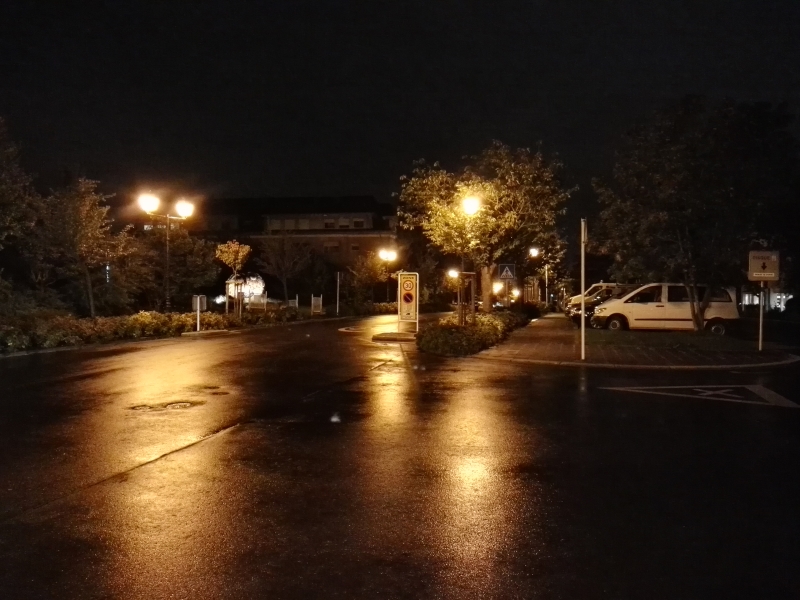
Nighttime differences between the Mate S and the P8 are much more noticeable. While the P8 struggled to properly capture the colour balance caused by the sodium lamps on the streets, the Mate S is able to do a much better job at reproducing the warmer scenes. An odd characteristic and regression on the Mate S in scene 1 was that the device wouldn't properly focus, resulting in some blurred out captures for that scenario.
In the last mixed-lightning scenario we see the Mate S again differ in terms of colour balance and slightly different exposure settings. Unfortunately this time around it's a regression compared to the P8 as it reproduces a too cold image compared to what we see on the P8 or Galaxy S6.
A new addition to Huawei's camera is a "Pro mode" with full manual controls. It allows for choosing between focus modes, an optional analog focus slider, exposure value from -2 to +2 E/V in steps of 0.1 or configuration of the shutter duration from 1/4000th to 8 seconds. ISO is configurable from ISO100 to ISO1600. What I also liked was besides the usual options of pre-configured white-balance presets also a full manual slider from 2800 to 7000K in 100K steps. All in all, this is a feature-complete camera application in terms of the most common manual controls. The device lacks the capability to shoot in RAW format, which is a pity. As for the interface itself, while it does look interesting in terms of design, it still falls behind in terms of usability compared to Samsung's pro mode and more imporantly, LG's pro-mode found on the G4 which I currently see as offering the most extensive and functional UI of any stock smartphone camera application.
Overall the Mate S camera is a good performer, but I wished there would have been more advancements in terms of image processing to achieve a more consistent camera performance. Huawei still lacks a proper auto-HDR option that is able to smartly choose between the two shooting modes, making everyday shooting requiring a little trial & error when trying to get the best shot out of a scene.
Video Performance
We've talked about the rather disappointing video performance of the P8 and deducted that this must be caused by the disappointing ISP and processing of the Kirin SoC. Since the Mate S sports the same hardware we unlikely to see much improvement in terms of video recording performance.
1080p30 - Optical image stabilization
The Mate S lacks 4K recording, so the video settings are best kept at 1080p with OIS always on. Huawei gives the rare option to turn off OIS but I've come to the conclusion that there is no real reason to disable it as it offers no advantage. EIS is still a no-go, as while doing a great job in terms of stabilization, it vastly reduces the effective resolution of the output stream resulting in much blurrier video that is simply no longer acceptable. Even with the optimal settings, the Mate S, similarly to past Huawei devices simply lacks sufficient detail to be able to compete against flagships from other manufacturers.
1080p videos are recorded at a bitrate of around ~9800kbps with a stereo 48KHz 96kbps AAC audio track. As with all previous Huawei devices I've review, the audio recording fidely is again among one of the best of any devices I've used with excellent clarity and stereo audio reproduction, so there's definitely praise to be had in that regard.


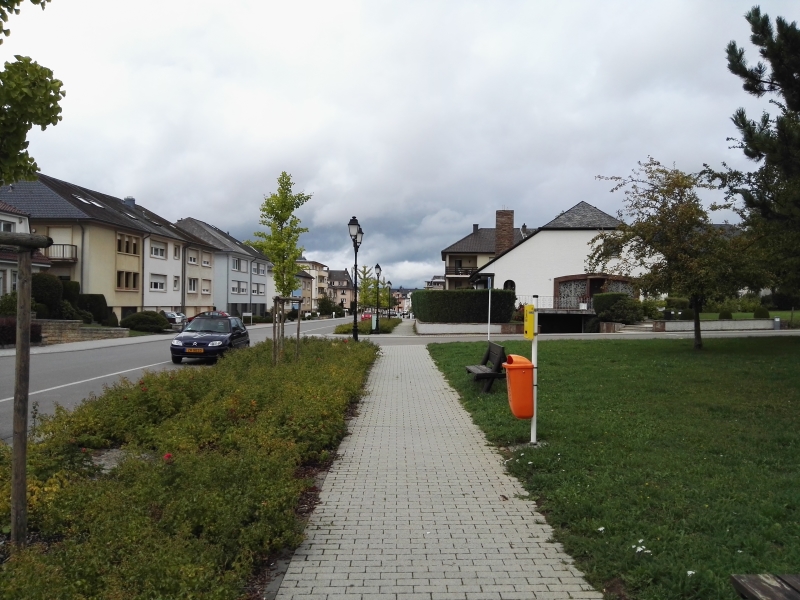












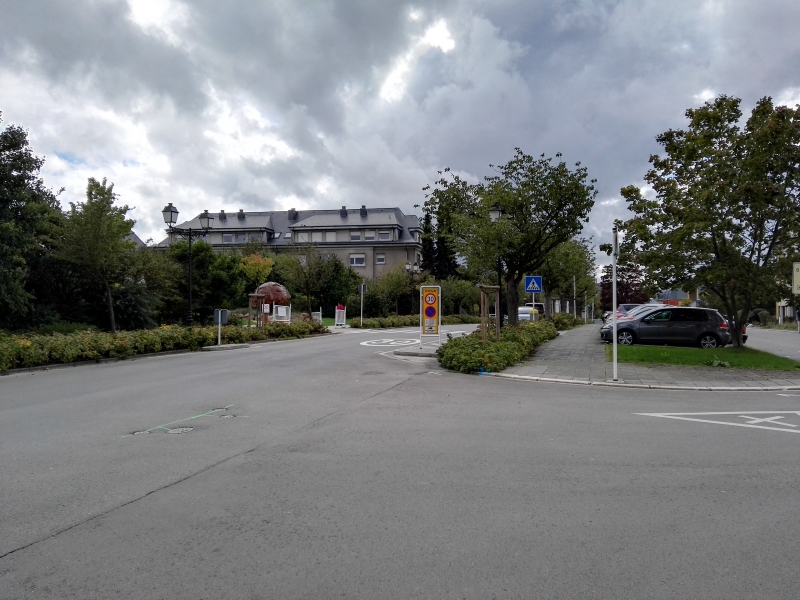





































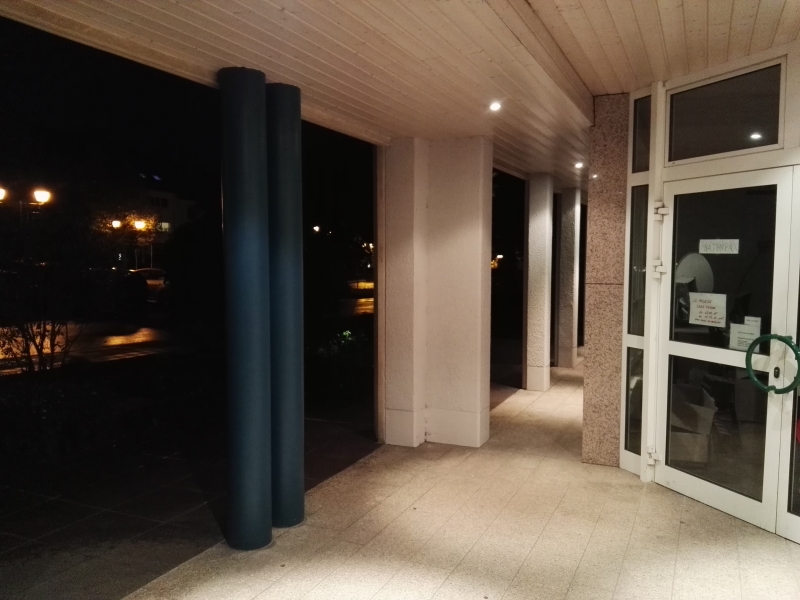






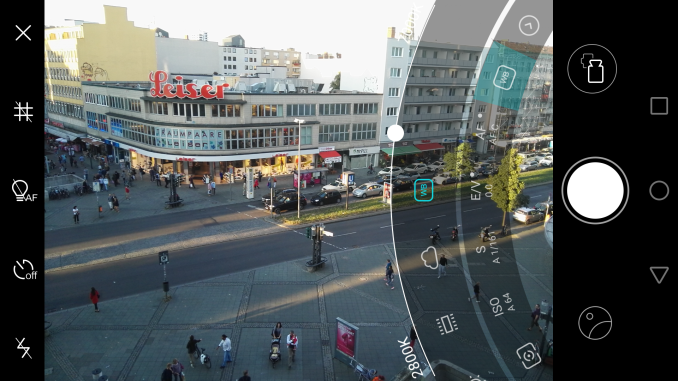








54 Comments
View All Comments
tipoo - Wednesday, December 2, 2015 - link
The 4 low power cores seem to consume more power than the high performance core cluster, they just shut off earlier. Curious.With lower core counts in use it shaves off a bit though, but I'm still not convinced big.LITTLE with the same core types is worthwhile. Radically different cores? Sure. Might have more to do with "8" being significant in China.
Exophase - Wednesday, December 2, 2015 - link
You can't say either cluster consumes more or less power than the other because they have different power/frequency curves. The power-optimized cluster may use (marginally) more power near the top of its clock speed but you can see by 1GHz it uses significantly less. I don't know precisely how the two different clusters vary but I would guess that the power optimized cluster sacrifices much voltage/frequency scaling in exchange for much lower leakage.Since the scheduler works with a gap between the "up" and "down" transition points in order to avoid hysteresis it makes sense to have the upper end of the power optimized cluster's performance range exceed the lower end of the performance optimized cluster's. Even if it uses a little more power doing so.
From a pure DVFS standpoint the power consumption curves presented are a fairly convincing argument for why this A53 + "A53e" setup is worthwhile. Either cluster on their own is pretty clearly inferior, either the A53e cluster needing 100+mW while on at its lowest frequency or the A53 cluster incapable of exceeding 1.5GHz. Perhaps a hypothetical implementation in between the two would be "good enough", but I'd argue that if you must use Cortex-A53 cores even a couple hundred extra MHz at the upper end is highly desirable for a lot of users.
Since the utility of DVFS is a foregone conclusion at this point the only real question is if the overhead in transitioning between cores is small enough to make this work as a DVFS system (we'll put aside the extra advantages and complications of a full HMP setup). A lot of people are arguing that it isn't, but I'm not really seeing hard data to support this. I personally believe people underestimate the number of loads that either have low frequency swings in performance requirements or reach a full on steady state for long periods of time. Even on mobile devices.
Andrei Frumusanu - Wednesday, December 2, 2015 - link
Yes, good analysis.Please keep in mind that we might not be seeing the full curves as the vendors simply cut them off where it doesn't make sense. The 1GHz point is extremely important as a pointer as to what the actual physical difference is. Again it's a pity that I can't access the voltages on HiSilicon SoCs otherwise this would be a much easier discussion to back up, but imagine that for the perf cluster the 1GHz spot would basically be the bottom in terms of scaling voltage down at which point race to idle takes over. The other way round for the power cluster, voltages at the top frequencies there might already have reached the high end and thus not be able to go further up in frequency, but on the other side of the curve they're able to go much lower in power.
All in all I think it still makes a lot of sense in terms of implementation.
deskjob - Wednesday, December 2, 2015 - link
Is it me or is this a blatant rip-off of the HTC One series design language?s.yu - Saturday, December 5, 2015 - link
Huawei's been copying designs from this company and that. P8 was some Sony with a little Apple and HTC, lol.fanofanand - Wednesday, December 2, 2015 - link
At the heart of the Mate S we find the HiSilicon Kirin 935. This is the same SoC that was found on the basic model Huawei P8Chart shows 930
Andrei Frumusanu - Wednesday, December 2, 2015 - link
Corrected, thanks. But in truth they're both the same piece of silicon, the 935 is just a marketing name of the higher binned SoC.fanofanand - Wednesday, December 2, 2015 - link
I just know you are a details guy. I love reading your analysis and have bought 2 phones based on your reviews. Keep up the great work and ignore the Apple/Samsung trolls :)Ethos Evoss - Wednesday, December 2, 2015 - link
HUaaaweii smartphonee got battered as usual on this site :DDDAnanadidatechno-tech .. I CANNOT WAIT for Mate 8 review what u gonna say all about it ..
I BETTING on next batter AGAIN :DDD even it has higher specs .. you will describe all as all on bottom graphs :DDD
Don't worry I do not own huawei smartphone anymore.. will see in future.. :)
Ethos Evoss - Wednesday, December 2, 2015 - link
You completelly forgot about Force Touch tho ..